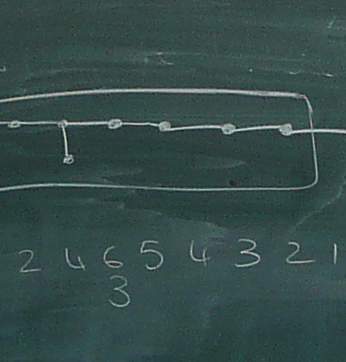INCIDENCE GEOMETRY AND BUILDINGS 2012

February 6-10, 2012 Organizers: Bart De Bruyn, |
Anna Kasikova |
On point-line geometries of buildingsSuppose \(\mathcal{B}\) is a building of type \(M=(m_{ij})\), \(\Gamma\) is a Grassmann geometry of \(\mathcal{B}\), and \(G\) is the point-collinearity graph of \(\Gamma\). Many of the properties of the point-line geometry \(\Gamma\) can be deduced from the properties of the chamber system \(\mathcal{B}\). In particular, \(\Gamma\) is a partial linear space and a gamma space; every singular subspace of \(\Gamma\) is a projective space and is the point shadow of a residue of \(\mathcal{B}\) with diagram is \(\mathsf{A}_k\); every triangle of the point-collinearity graph of \(\Gamma\) is contained in a singular subspace of \(\Gamma\); the shadow of every residues of \(\mathcal{B}\) is a convex subspace of \(\Gamma\). For many spherical building geometries, in particular for all geometries corresponding to a single node of the diagram, the geometry is the convex subspace closure of the shadow of an apartment. Shadows of residues of \(\mathcal{B}\) and of apartments of residues of \(\mathcal{B}\) can be recognized in \(G\). Let \(\mathcal{C}\) be the set of circular walks in \(\mathcal{B}\) consisting of the circuits of length \(3\) and of the circuits of all possible types \(p_{m_{ij}}(i,j)\), \(\{i,j\} \subseteq I\). Then \(\mathcal{B}\) is \(\mathcal{C}\)-simply connected. Suppose \(X\) is a finite subset of \(\mathcal{C}\) such that (\(*\)) every arc of \(B\) is traversed the same number of times as its inverse.Then there is a finite set \(\mathcal{X}=\{ X_i\}\), \(X_i\subseteq \mathcal{C}\), such that (1) every walk in \(X\) is encountered in \(\cup_i X_i\) one more time than its inverse, and every walk in \(\mathcal{C}- X\) is encountered the same number of times as its inverse, (2) every \(X_i\) is contained in a residue of \(\mathcal{B}\) of rank at most three and has property (\(*\)). These properties of \(\mathcal{B}\) can be translated into properties of \(G\) and, combined with simple connectedness of hyperplane complements in \(G\), they can be used to construct projective embeddings of \(\Gamma\) from embeddings of subspaces of \(\Gamma\). |